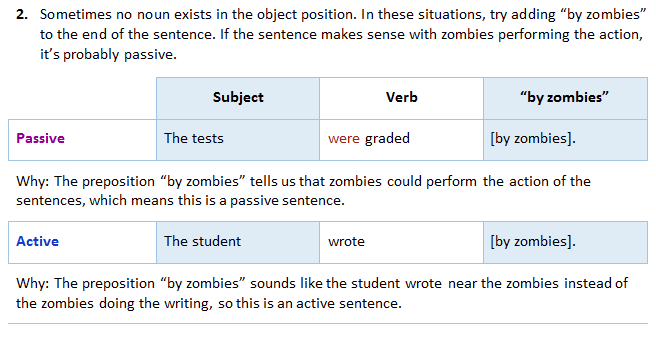

The sentence gets flipped, and the subject is now being acted upon by the verb. In the passive voice, the action’s target, ball, is positioned first as the focus of the sentence.

This is a simple, direct example of the active voice. Notice how the subject, dog, is performing the action, chase, on the target of the action, ball. In the active voice, the subject is performing an action: Having trouble becoming more "active" in your writing? Send your document to our English grammar check and one of our editors will help you kick your passive voice problems.Grammarly helps you communicate confidently Write with Grammarly What is active voice, what is passive voice, and what are their different functions? Once you get the hang of it, however, you might be surprised by how much it improves your papers' readability and therefore your readers' interest. Writing in the active voice may seem strange at first, especially for those who favor passive voice, such as arts and humanities writers. In active voice, a sentence's actor usually precedes the verb, but the actor usually follows the verb in passive voice.

Passive voice often leaves readers wondering about who performed the action, but active voice makes this clear. Does the sentence make it clear to readers who is performing the verb's action, or is the verb's subject absent or unclear?.Does the sentence emphasize the verb's actor or its recipient?Īctive voice stresses the actor and the action, not the recipient of the action.If you're in doubt about which voice you are using, consider the following questions: Use the active voice because it gives a paper focus and imparts a feeling of forward motion, implying to readers that the narrative does indeed lead somewhere, instead of giving them the meandering feeling that passive voice often elicits. Active voice helps to accomplish these goals by shortening the prose and making it stronger and more direct than passive voice. Two general goals of all writing are to catch and then hold readers' attention, ensuring that they’ll want to keep reading. Use active voice and keep your audience engaged Frequently, we see sentences that begin with phrases such as "It has been noted that." or "This compound has been known to react with." These constructions leave readers wondering, "Noted by whom?" and "Known by whom?" A good alternative is a direct citation, such as "Smith (1982) noted that." or "Since Johnson's groundbreaking study (1995), scientists and researchers have known that." This makes it clear to readers where the knowledge comes from and gives them some general background information about literature on the topic. Using passive voice can obscure your subjectĪnother problem with the passive voice is that it often obscures the subject, so readers are left to guess about who performed the action of the sentence's verb. It's much clearer and stronger to say, "This experiment tested whether" and "This paper discusses the following issues." These simple changes make the paper easier for readers to follow as well as clarify and tighten the writing. Consider the sentences "In this experiment, it was tested whether." and "In this paper, the following issues are discussed." We see these constructions in nearly every scientific paper we receive. Active voice should always be your first choice change to passive only if the particular sentence warrants it. Your high school English teacher was right: passive voice does sound weak, and although it's okay sometimes, it should be used sparingly. The sentence "Tom punched Bob" is written in active voice "Bob was punched by Tom" is in passive voice. One of the most common weaknesses pervading the documents we receive, especially academic writing, is the overuse of the passive voice. This and subsequent articles that address making comparisons properly and the wandering " only" will provide authors with a quick and easy reference guide to tighten up their writing. This indicates widespread misunderstanding or lack of knowledge of some common writing principles. Many of the same types of problems and issues are repeated over and over again by different authors and in papers covering a wide range of subjects.

One interesting aspect of editing and proofreading the broad range of papers submitted to us is that distinct patterns have emerged in the types of changes needed to improve these papers.


 0 kommentar(er)
0 kommentar(er)
